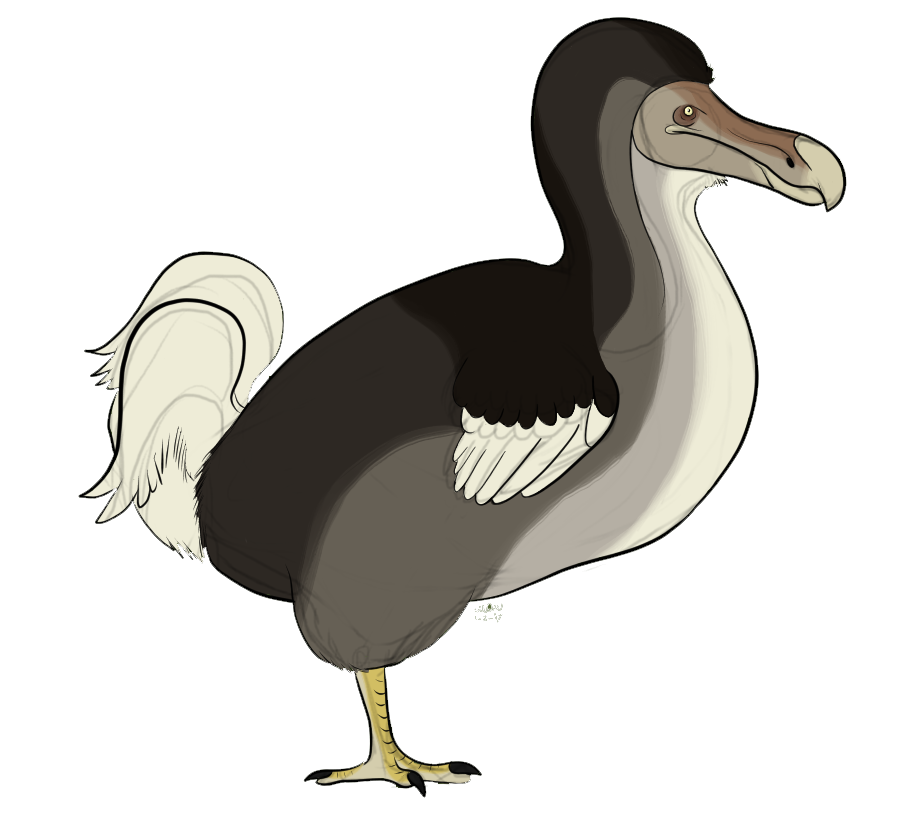Dodo

|
|
|
The dodo is one of the more infamous extinct animals. Native to Mauritius, this giant flightless pigeon has become the symbol of extinction in the public imagination. First mentioned by Dutch sailors in 1598, it became noted for its fearless nature. Its fat and stupid reputation comes from overfed captive specimens. It was driven extinct by hunting, invasive species, and habitat encroachment. The closest modern relative of the dodo is the Nicobar pigeon. The dodo's body is gray to brown, and its wing feathers and the tuft of curly feathers on the end of its tail are lighter in color. The feathers themselves are not degraded as in many other flightless birds. Though it may not look it, it is numble and maneuverable. Its head and beak are robust. Males are larger and have larger beaks than females. Dodoes swallow stones to assist digestion of the foods they eat. Their appetites are ravenous, and they can survive on a variety of foods. It lays but one egg at a time. Dodos can live up to their early 20's in the wild, and lived in dry coastal areas of Mauritius. Dodos are fearless and inquistive by nature. Dodos are one of the animals in the petting zoo. As in the wild, they are fearless and inquisitive. In fact, the dodo was the first extinct animal to be reverse-engineered by Huxley Paleozoo, and he still lives here today! |
Scientific name Location Time Height Diet |